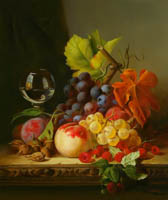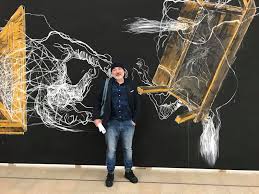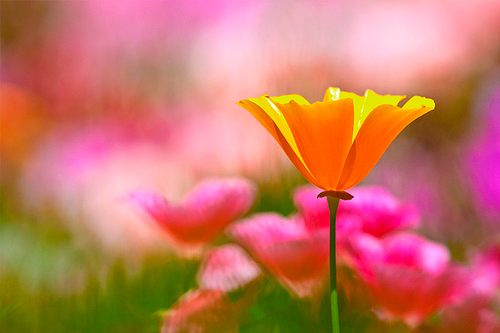STYLES AND DIRECTIONS OF PAINTING
 There is a huge variety of styles and trends in the visual arts. Often they do not have clearly defined boundaries and smoothly pass from one to another, being in continuous development, mixing and counteraction. Within the framework of one historical art style, a new one is always born, and that, in turn, passes into the next, etc. Many styles coexist at the same time and therefore there are no “pure styles” at all. Here you can order a portrait from a photograph on canvas.
There is a huge variety of styles and trends in the visual arts. Often they do not have clearly defined boundaries and smoothly pass from one to another, being in continuous development, mixing and counteraction. Within the framework of one historical art style, a new one is always born, and that, in turn, passes into the next, etc. Many styles coexist at the same time and therefore there are no “pure styles” at all. Here you can order a portrait from a photograph on canvas.
ABSTRACTIONISM ABSTRACTIONISM (came from lat. Abstractio – removal, distraction) – the direction of art, abandoning the approximate reality of images of forms in painting and sculpture. One of the goals of abstractionism is to achieve harmony, to create certain color combinations and geometric shapes in order to evoke various associations in the contemplator. The main representatives of abstractionism were: Vasily Kandinsky (1866-1944), Pablo Picasso (1881-1973).
Vanguardism Vanguardism (derived from fr. Avant-garde – advanced detachment) – a set of experimental, modernist, emphasized unusual, exploratory undertakings in the art of the 20th century. The avant-garde directions are: Fauvism, Cubism, Futurism, Expressionism, abstractionism, surrealism, actionism, pop art, conceptual art.
ACADEMISM ACADEMISM (from French academisme) is a direction in European painting of the 16th-19th centuries. It was based on dogmatic following the external forms of classical art. Followers characterized this style as a discourse on the art form of the ancient ancient world and the Renaissance. Academism replenished the traditions of ancient art, in which the image of nature was idealized, while compensating for the norm of beauty. Annibale, Agostino and Lodovico Carracci wrote in this style.
ACTIONISM ACTIONISM (from the English. Action art – the art of action) – happening, performance, event, the art of the process, the art of demonstration and a number of other forms that arose in the avant-garde art of the 1960s. In accordance with the ideology of actionism, the artist must organize events and processes. Actionism seeks to blur the line between art and reality. The most famous representative of actionism is Jackson Pollock.
ALLA PRIMA ALLA PRIMA (ala prim) (derived from Italian. Alla prima – at the first moment) is a type of oil painting technique that provides for the painting (or its fragment) to be completed in one session, without preliminary registration and painting.
AMPIRE AMPIRE (derived from the French. Empire – empire) – a style in architecture and decorative art that arose in France at the beginning of the 19th century, during the First Empire of Napoleon Bonaparte. Empire is the final development of classicism. For the embodiment of majesty, sophistication, luxury, power and military strength, Ampiru is characterized by an appeal to ancient art: ancient Egyptian decorative forms (trophies, winged sphinxes …), Etruscan vases, Pompeii paintings, Greek and Roman decor, Renaissance frescoes and ornaments. The main representative of this style was J.L. David (paintings “The Oath of Horatius” (1784), “Brutus” (1789))
ANIMALISM ANIMALISM (derived from lat. Animal – animal) is a genre of fine art in which animals are the main subject of the image.
APPLICATION APPLICATION (derived from lat. Applicatio – application) – a way to create ornaments, images by pasting on the canvas multi-colored pieces of any material.
ANACHRONISM ANACHRONISM (from the Greek ana – back and hronos – time), another name – hypermanism – one of the directions of postmodernism, offering an author’s interpretation of the art of the past. Anachronism arose in the late 1970s. in Italy, later in France. Masters of Anachronism: Carlo Maria Mariani, Omar Galliani, Luigi Ontani, Stefano di Stacio, Ubaldo Bartolini, Antonio Abbate, Jean Garuy.
ANDEGROUND ANDEGROUND (from the English underground – underground, underground) – a number of artistic trends in contemporary art, contrasting themselves with mass culture, the mainstream. The underground rejects and violates the political, moral and ethical orientations and types of behavior accepted in society, introducing asocial behavior into everyday life. In the Soviet period, due to the severity of the regime, almost everything is unofficial, i.e. not recognized by the authorities, art turned out to be underground.
ARTE POVERA ARTE POVERA (from it. Arte povera – poor art) is an art movement that brought together artists from Rome, Turin, Milan and Genoa in the second half of the 20th century. Artists of Arte Povera visualized the dialogue between nature and industry using industrial or non-artistic materials, wanted to free art from the limitations of traditional forms of art and artistic space, and also played with the political dimension of industrial materials. The movement became a notable phenomenon on the international art scene, being in confrontation and dialogue with minimalism in America, which also used industrial materials.



